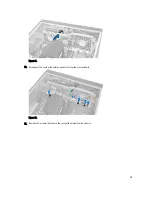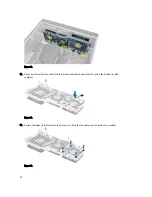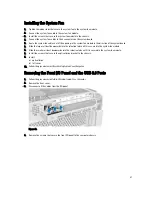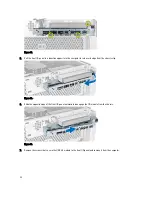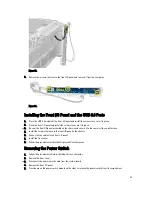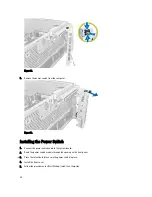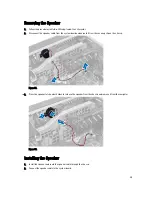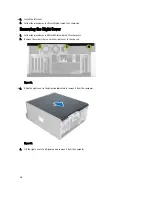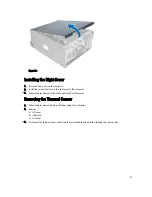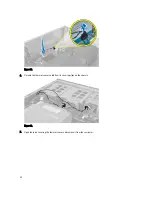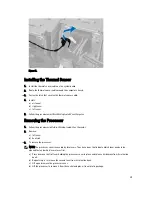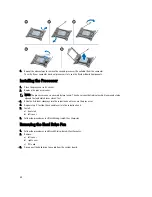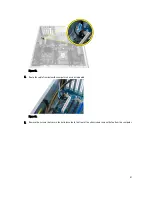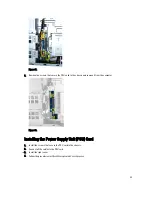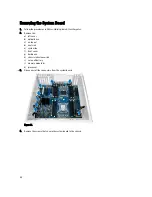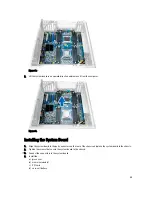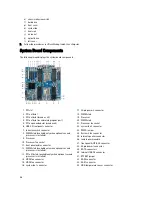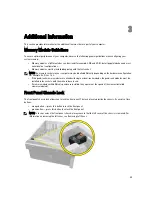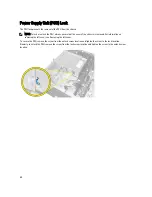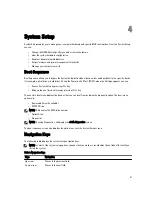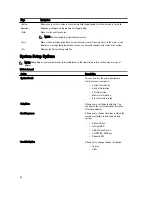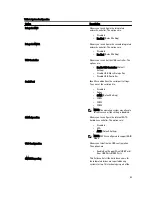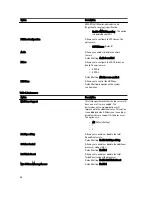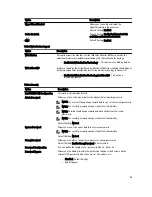
Figure 65.
4.
Remove the screws that secure the PSU card to the chassis and remove it from the computer.
Figure 66.
Installing the Power Supply Unit (PSU) Card
1.
Install the screws that secure the PSU card to the chassis.
2.
Connect all the cables to the PSU card.
3.
Install the right cover.
4.
Follow the procedures in
After Working Inside Your Computer
.
43
Summary of Contents for Precision Workstation T7600
Page 1: ...Dell Precision Workstation T7600 Owner s Manual Regulatory Model D02X Regulatory Type D02X001 ...
Page 6: ...6 ...
Page 47: ...35 Internal USB 2 0 connector 36 HDD1 fan connector 37 Coin cell battery 47 ...
Page 48: ...48 ...
Page 62: ...62 ...
Page 68: ...68 ...
Page 76: ...76 ...

